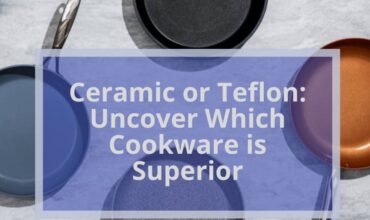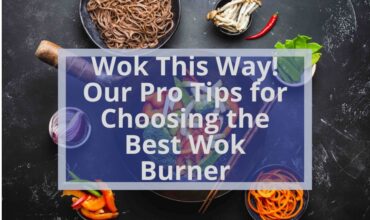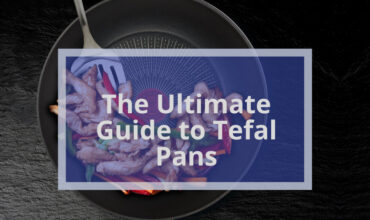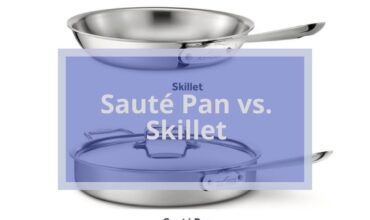The Instant Pot and traditional stovetop pressure cookers are the main options for pressure cooking. So, which is the real kitchen hero? The short answer is that it depends on your needs as a home cook. Both have their pros and cons.
Instant Pots excel at convenience with their preset buttons and hands-off cooking. But stovetop pressure cookers give more advanced control over temperature and pressure. Stovetop models have been around longer, too.
So, whether you’re a beginner or a serious chef, choosing the right pressure cooker for your needs can make all the difference for quick, delicious meals. But there’s much more to the Instant Pot vs. pressure cooker debate than meets the eye. To determine which appliance reigns supreme for your kitchen, you’ll need to know their fundamental differences in features, performance, safety, and price.
This head-to-head comparison reveals the winners in each category. Let the pressure cooker battle begin.
Instant Pot:
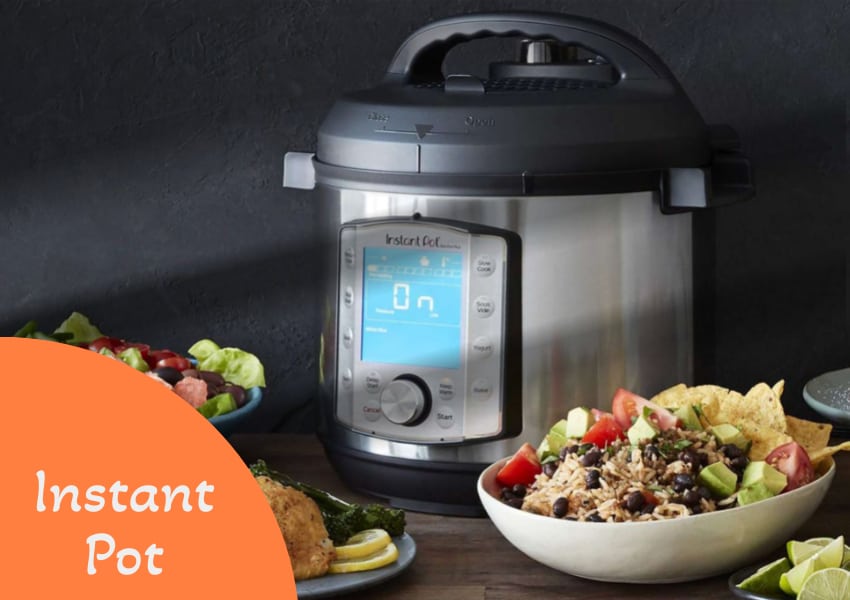
What Is an Instant Pot?
The Instant Pot is a popular electric pressure cooker. It is a multi-cooker brand name that can pressure cook, slow cook, steam, sauté, and more.
Instant Pots use electric heat and sensors to build steam pressure in a sealed pot. The trapped steam makes the internal temp very high – up to 250°F or more! This high heat cooks food faster.
Instant Pots have pre-set buttons for easy cooking. Just add food, close the lid, and press a button. The Instant Pot does the rest for hands-off cooking. It’s a real-time saver!
Sizes range from 3 quarts to 8 quarts. The 6 and 8-quart models are best for most home cooks. Instant Pots are kitchen game changers!
How Do Instant Pots Work?
Instant Pots use electric power to heat the inner pot and generate steam. The tightly sealed lid traps this steam inside.
As the steam builds up, pressure increases. Sensors monitor the precise pressure level. This pressurized environment raises the boiling temp above ordinary. Food cooks a lot quicker!
Once done, a valve safely releases the pressure. The lid then unlocks so you can open it. Quick pressure release stops the cooking. Natural release finishes cooking foods with a delay.
What Are the Benefits of Instant Pots?
- Here are some top benefits of Instant Pots:
- Cook food up to 70% faster – a huge time saver!
- Convenient hands-off operation with preset programs.
- Tenderizes tough, cheaper cuts of meat.
- Locks in flavor nutrients since cooking is fast.
- You can sauté, bake, and warm in one pot.
- Uses less energy than slow cooking all day.
· It is simple for beginners but does advanced methods, too.
Instant Pots are an absolute kitchen game changer. They make meal prep fast, easy, and delicious!
also read: Best Long Slot Toasters Reviews
Pressure Cooker
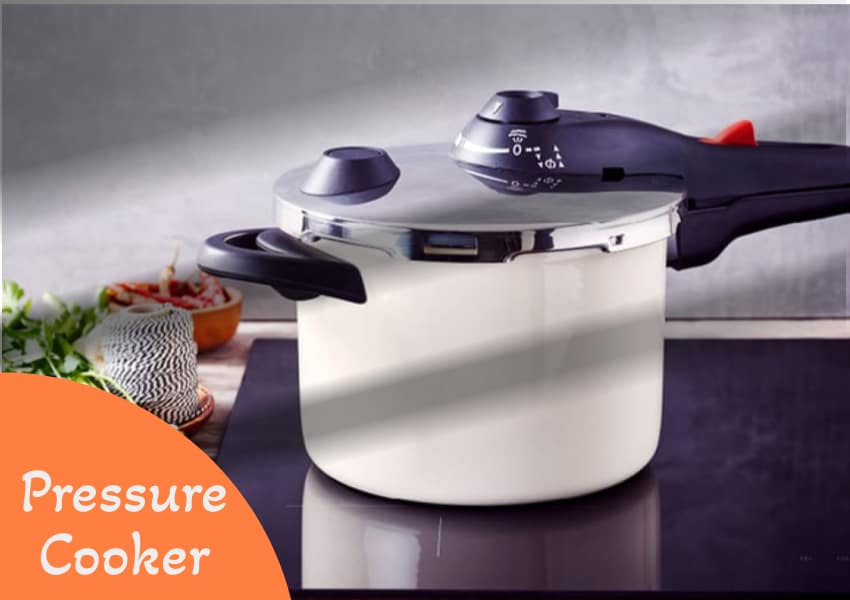
What Is a Pressure Cooker?
A pressure cooker is a pot with a locked lid that builds up steam pressure. This pressure allows food to cook faster. Stovetop pressure cookers have been around for ages. Food cooks 2-10 times quicker!
Pressure cookers have heavy pots with tight lids. As the liquid inside boils, it makes steam. The sealed lid keeps steam trapped. Pressure builds up to raise the water’s boiling point. Food cooks at 250°F+ vs 212°F.
Some types are electric models. But original pressure cookers sit right on the stove. Size options range from 4 quarts to 10+ quarts. Bigger ones work well for canning foods.
How Do Pressure Cooker Work?
Using a stove, the pot heats up. The liquid inside forms steam that can’t escape the sealed lid. This pressurized steam heats the pot vastly hotter than average. It lets food cook above the regular boiling temp of water.
As food cooks, the pressure limit valve controls the steam pressure level. It maintains the right amount of pressure. New models have safety locks, so the lids won’t open if still pressurized.
Once cooking is done, you release the pressure. Then, the lid can be opened safely. Releasing pressure stops the cooking so food doesn’t overcook.
What Are the Benefits of Pressure Cooking?
Cooking with pressurized steam has lots of benefits! Here are some top ones:
- Cook’s food up to 10x faster – huge time saver!
- Less energy used – pressure cookers use less heat.
- Nutrients are preserved since food cooks so fast.
- Tenderizes tough, cheaper cuts of meat.
- Allows complex flavors to develop in a short time.
- Makes juicy, delicious dishes in just minutes!
Pressure cooking is magic—no more waiting hours for roasts or stews. Get restaurant quality results fast at home!
also read: 12 Best Portable Electric Stoves 2023 | Countertop Burner Review
A Summarized Comparison of Instant Pot and Pressure Cooker
1. Features:
Ease of use.
For ease of use, Instant Pots win. Their preset buttons make pressure cooking simple. Just add ingredients, close the lid, and press a button. Instant Pots do the rest automatically. Stovetop cookers require manual control of heat and pressure.
Safety features
Safety has improved in modern pressure cookers. Instant Pots have automatic steam release and lid locks. This prevents opening while pressurized. Basic stovetop models also have backup valves and locks now. I find both types safe if used properly.
Versatility
For versatility, Instant Pots excel. They can pressure cook, sauté, slow cook, make yogurt, and more. Stovetop pressure cookers only pressure cook foods.
2. Performance:
Cooking speed
Cooking speed is fast in both appliances. But stovetop cookers can increase pressure (PSI) for even quicker cooking. Their max heat also browns better. But Instant Pots are more hands-off and convenient.
Evenness of cooking
The evenness of cooking is excellent in Instant Pots thanks to electric heat and sensors. Stovetop cooker heat isn’t as uniform, leading to more hot spots.
Energy efficiency
Energy-wise, Instant Pots are more efficient. Stovetop cookers require more constant heat and watching. Instant Pots use less energy for unattended cooking.
3. Price
Price-wise, basic stovetop pressure cookers are cheaper upfront. But the versatility of Instant Pots can make them more worth it in the long run.
Which One Is Right for You?
Choosing between an Instant Pot or stovetop pressure cooker depends on your needs as a cook.
Factors to consider when choosing between an Instant Pot and a pressure cooker:
1. Experience-level
Instant Pots are great for beginners. Their presets make pressure cooking easy. Stovetop cookers have a learning curve but allow more control.
2. Convenience
Instant Pots win for hands-off cooking. They operate themselves once they start. Stovetop cooking requires monitoring.
3. Versatility
Instant Pots do way more than just pressure cook. Stovetop cookers only pressure cook.
4. Budget
Stovetop pressure cookers start cheaper. But Instant Pots can be more worth it in the long term.
5. Cooking speed
Stovetop cookers can have higher pressure for even faster meals. But Instant Pots are fast, too.
Our recommendations:
Beginners should start with a 6-8-quart Instant Pot. The presets make it simple to use. Busy folks will love the hands-off convenience, too.
Advanced cooks wanting more control can use a stovetop pressure cooker. Get a larger 8–10-quart size if cooking for 4+ people.
Also read: 10 Best Under Cabinet Toaster Ovens in 2023 Review
Tips For Using an Instant Pot or Pressure Cooker Safely and Effectively
- Using a pressure cooker safely starts with the right gear. Always use the lid and accessories made for your model. Check that seals are in place in the lids. Use pots and cookers that are the right size for recipes.
- Read manuals! Know how your model works. Learn how to seal, pressurize, depressurize, and release steam properly. Follow all manufacturer guidelines.
- Don’t overfill pots. Leave space at the top for food to expand and steam to build. Overfilled pots can clog valves. Stick to 2/3 full for solids or 1/2 full for beans and grains.
- Use enough liquid. Pressure cooking needs steam to build pressure. Add at least 1 cup of water or broth to create steam.
- Once pressurized, don’t open the lid until the pressure is fully released. Forcing it open when pressurized can lead to burns. Let pressure drop naturally, or use quick-release methods.
- Clean seals and valves regularly. Built-up food debris can prevent proper sealing and pressure. Keep all parts well-cleaned.
These simple tips lead to safe, quick, and delicious pressure-cooked meals! Let me know if you have any other pressure-cooking questions.
Troubleshooting Common Problems with Instant Pots and Pressure Cookers
Even great chefs sometimes have issues using pressure cookers. Here are tips to troubleshoot common problems:
- Pot won’t pressurize – Check that the lid is sealed correctly and any valve is in the sealed position. Make sure the pot is at least 1/3 full of liquid. Old seals may need replacement if they no longer seal well.
- Food is undercooked – The pot may not have pressurized fully. Make sure enough liquid is used. Check that valves are not clogged. Try cooking for a few more minutes.
- Food is overcooked or burned – There may have been excess pressure. Try reducing cooking time. Quickly release pressure as soon as you are done cooking to stop overcooking. Add extra liquid next time.
- The pot is hard to open – Never force it open! Always ensure pressure is fully released naturally or using quick-release methods. Forcing it can lead to injury.
- Valves clogged – Valve parts should be cleaned regularly to prevent food buildup. Check the valve is clear of debris if the pot struggles to pressurize or release pressure.
- Seals leaking – Replace worn or damaged lid seals to ensure the pot can pressurize properly. Always use manufacturer seals made for your model.
Let us know if you have any other pressure cooker issues. Troubleshooting takes some learning and adjustments. Patience and practice will prevent problems. Happy pressure cooking!
Pros And Cons of Each Appliance
Instant Pots:
- Very easy to use with preset buttons
- More versatile – can sauté, slow cook, etc.
- Convenient hands-off cooking
- Generally safer with more sensors
- Delay start and keep warm settings
- Models can be pricier upfront
- Size limitations for larger batches
- Less control over pressure levels
Stovetop Pressure Cookers:
- Starts cheaper for basic models
- It can come in larger sizes
- Reach higher pressure levels
- Allows more manual control
- Browns and Sears better
- Learning curve to use correctly
- Requires monitoring while cooking
- Only pressure cooking
- Old models are less safe
Each has advantages based on your needs. Instant Pots excel at ease of use. Stovetop models give more control. Choose what fits your budget and cooking style!
How To Choose the Right Pressure Cooker Size
Choosing the right pressure cooker size depends on a few key factors:
- How many people do you cook for – Go bigger if you cook for 4+ people regularly. Smaller 3–5-quart sizes work well for 1-2 portions.
2. Types of recipes – larger pots around 8-10 quarts are good for big batches of chili, soups, beans, etc. They give room for ingredients to bubble and expand.
3. Storage space – Make sure you have room to store the pot conveniently. Large cookers take up more cabinet space.
4. Budget – Larger pressure cookers often cost more. Consider how often you will use it and need a bigger capacity.
For most home cooks, we recommend a 6 or 8-quart cooker. This gives flexibility to make family meals but won’t be too bulky. Look for a well-known brand and model with good reviews. Quality construction is key for even pressure. Check pot dimensions to ensure a good fit on your stove.
Getting the right size pot makes easy, safe pressure cooking! Let me know if you need other tips for choosing a great pressure cooker.
How To Maintain an Instant Pot or Pressure Cooker:
Regular maintenance is critical to keep any pressure cooker working its best. Here are my tips:
- Clean thoroughly after each use – Wash all inner pots, lids, seals, valves, etc. This prevents food buildup.
- Inspect seals before cooking – Replace cracked or worn seals to ensure the pot seals tightly. Check that they are snugly fitted.
- Lubricate seals occasionally – Using a bit of cooking oil on silicone seals keeps them supple. Take care not to get oil on the valve.
- Descale if mineral deposits develop – Use descaling cleaners to remove hard water stains for pressure cookers.
- Replace valves if clogged – Valves can get blocked by food debris. Replace them if cleaning doesn’t fix poor pressure release.
- Check safety features – Ensure regulator valves, locks, and vents are working right for safe use.
- Read the user manual – Follow all maintenance guidelines from the manufacturer.
With the proper care, an Instant Pot or stovetop pressure cooker should provide many years of delicious meals! Let me know if you have any other pressure cooker care questions.
FAQs
How long does pressure cooking take compared to regular cooking?
Pressure cooking is much faster, cooking foods in about 1/3rd the normal time! Meals that usually take an hour may be done in 20 minutes. Even tough roasts or stews can be tender in 30-60 minutes instead of hours.
What types of food work best in a pressure cooker?
Tough cuts of meat, beans, grains, and tough root veggies are great in a pressure cooker. The high heat tenderizes meats and speeds up cooking beans, rice, etc. Soups, stews, and braised dishes all benefit from faster cooking.
Can you pressure-cook frozen foods?
Yes, you can successfully cook frozen foods in a pressure cooker! Make sure to add a bit more liquid to generate steam. And increase cooking times by about 50% for frozen ingredients. The pressure will thaw and tenderize frozen meats and veggies.
Can you adapt any recipe for pressure cooking?
Most recipes can be adapted, reduce liquid slightly, and cut cooking time. Avoid too much thickeners or dairy that may curdle. Lower PSI works better for delicate seafood, eggs, etc. Check your manual for tips on converting recipes.
What liquids work best for pressure cooking?
Water and broth are great. Tomato products, wine, and milk can be used but may need thickening afterward. Avoid too much oil, which can clog valves. Always have at least 1 cup of liquid to create steam.
Conclusion
Ultimately, Instant Pots and stovetop pressure cookers have pros and cons. Key differences include:
- Instant Pots are easier to use out of the box. Stovetop cookers have more of a learning curve.
- Instant Pots offer more cooking options beyond pressure cooking. Stovetop cookers only pressure cook.
- Stovetop cookers can reach higher pressure levels for faster meals. But Instant Pots are fast, too.
- Stovetop cookers allow more control over pressure and heat. Instant Pots are more hands-off.
For most home cooks, I suggest starting with a user-friendly Instant Pot. The presets make meal prep simple. However, advanced cooks may prefer a stovetop cooker for maximum control.
Either way, pressure cooking is a game-changer!
We hope this overview has helped compare these kitchen tools. Let us know if you have any other questions!
